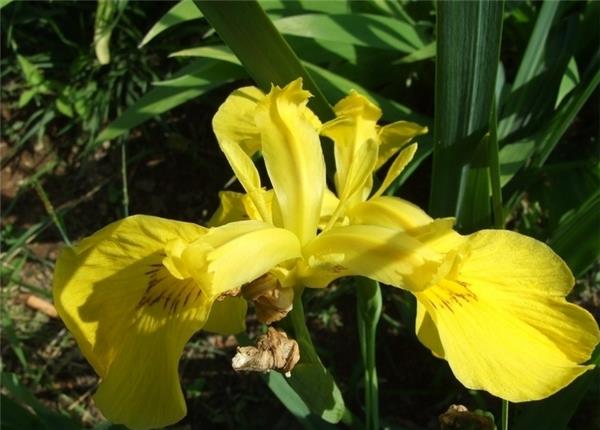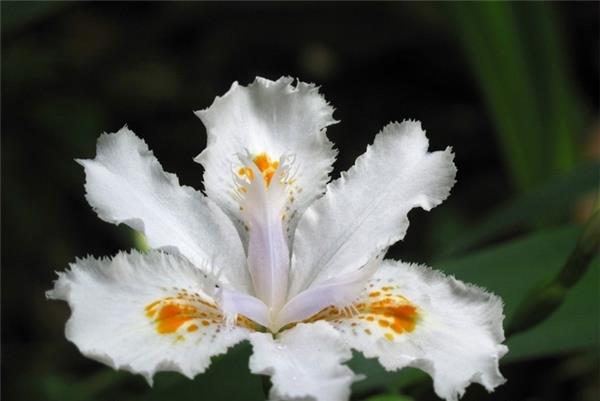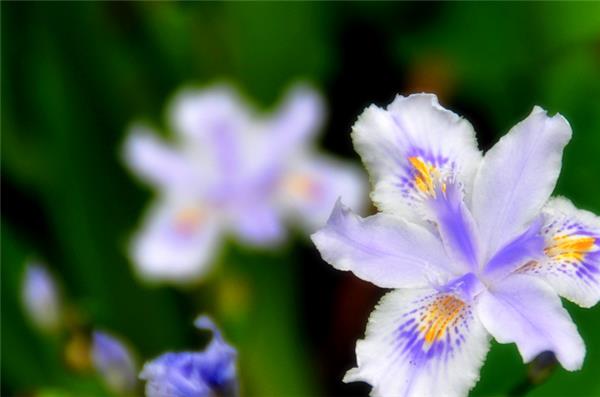[planting technique of Iris] how to raise Iris
Through continuous experiments, horticulturists around the world have cultivated many excellent new varieties with bright colors, such as lilac, dark purple, pure white, white and yellow, and so on. The florescence of Iris is in May, and the plant is 80 to 90 meters high, so it is a very good ornamental plant. Now let's take a look at the cultivation of irises.

I. planting techniques of Iris
The method of dividing the rhizome. In the middle and late September of every year, the underground rhizome of Iris is dug out, the leaves on the ground are cut 8 to 10 meters away from the rhizome, cut into stem segments with buds, and planted separately to strengthen their management, so that they can blossom as usual the next year.
Sowing and reproduction: after the seeds of irises are ripe, they can be sown indoors or in the open field in the autumn of that year. The seeds are treated with warm water for one day before sowing, and then the germination can be accelerated after a low temperature of 4 to 5 degrees for 10 days. After that, the seedlings are managed and the seeds can begin to bloom in the third year.
Soil requirements: the cultivation of irises should choose clayey loam rich in humus or alkaline soil mixed with calcareous. The growth of irises in acidic soil can lead to poor growth, so rotten compost can be used before planting, adding a small amount of bone powder and herbal ash as base fertilizer, and 1 or 2 chemical fertilizers can be applied during the growing period, especially before meetings, to accelerate its growth.

II. Disease and insect pest control of Iris
Seed ball rot is a serious harm to seed bulbs, and the surface symptoms are not obvious at the time of the disease, but may appear in the later stage of the disease. The main symptoms are that the bulbs do not produce roots or there are few roots, and the lightly injured plants are low and not straight. The disease is not contagious and will not pollute the soil for a long time. In order to prevent and cure the seed ball rot, we should first pay attention to keep the seed ball dry and keep the air circulating during the seed ball preservation, and then spray 1000 times of chlorothalonil wettable particles before storage to sterilize the seed ball.
The basal rot first occurs at the base of the bulb and then infects the bulb upward. There is a clear boundary between the disease department and the healthy organization. The affected tissue becomes soft, grayish brown, drawn inward, and sometimes covered with a white texture. After the diseased bulb is planted, it cannot blossom.

III. Soil conditions needed for Iris
Irises can be grown not only in glass greenhouses or plastic greenhouses, but also in open fields. Outdoor planting with temporary mulch, or the use of mobile housing, especially in spring and autumn is feasible.
The production of cut iris can be carried out in virtually any type of soil, as long as it has good drainage, strong moisture retention, and does not harden (otherwise it will limit plant growth). A good soil structure is a basic condition, because it is necessary to plant irises with short growing periods in large quantities.
In heavy loam soil, it is recommended that peat, vermiculite or coarse sand be added and mixed with soil at a depth of about 25 meters to improve the soil.
Easy-hardening soil, after planting, can be covered with a layer of rice husks, straw, pine needles, black peat or similar materials to prevent soil hardening. Secondary methods can also be used to prevent the soil from drying quickly.

The above are the soil conditions needed for the cultivation and cultivation of irises. I hope that people who love flowers and cherish flowers can plant irises in addition to beautiful irises and do their own irises to add green to their families.
- Prev

[what if the leaves of the banyan tree fall] how to raise the banyan tree well
[what if the leaves of the banyan tree fall] how to raise the banyan tree well
- Next

[how do banyan trees lose their old leaves] how do banyan trees lose their old leaves?
[how do banyan trees lose their old leaves] how do banyan trees lose their old leaves?
Related
- Wuhan Hospital Iron Tree Blooming Result Was Instantly Frightened by the Gardener Master
- Which variety of camellia is the most fragrant and best? Which one do you like best?
- What is the small blue coat, the breeding methods and matters needing attention of the succulent plant
- Dormancy time and maintenance management of succulent plants during dormancy
- Minas succulent how to raise, Minas succulent plant pictures
- What are the varieties of winter succulent plants
- How to raise succulent plants in twelve rolls? let's take a look at some experience of breeding twelve rolls.
- Attention should be paid to water control for succulent plants during dormant period (winter and summer)
- Watering experience of twelve rolls of succulent plants
- Techniques for fertilizing succulent plants. An article will let you know how to fertilize succulent plants.

